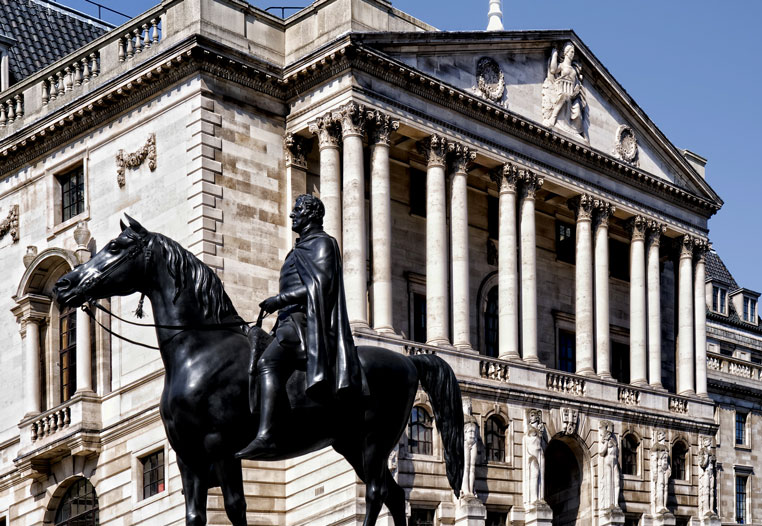At its meeting ending on 14 December 2016 the Committee voted unanimously to maintain Bank Rate at 0.25%. In their statement they refer to rising long term rates reflecting looser fiscal settings in the USA, and elevated risks from China, the euro zone and elsewhere.

The Committee voted unanimously to continue with the programme of sterling non-financial investment-grade corporate bond purchases totalling up to £10 billion, financed by the issuance of central bank reserves. The Committee also voted unanimously to continue with the programme of £60 billion of UK government bond purchases to take the total stock of these purchases to £435 billion, financed by the issuance of central bank reserves.
The Bank of England’s Monetary Policy Committee (MPC) sets monetary policy to meet the 2% inflation target, and in a way that helps to sustain growth and employment
In the November Inflation Report, the Committee set out its projections for output, unemployment and inflation, conditioned on average market yields. Output was expected to grow at a moderate pace in the near term, but slow from the beginning of next year. In part that reflected the likelihood that household real income growth would slow and hence weaken household spending. It also reflected uncertainty over future trading arrangements, and the risk that UK-based firms’ access to EU markets could be materially reduced, which could restrain business activity and supply growth over a protracted period. The unemployment rate was projected to rise to around 5½% by the middle of 2018 and to stay at around that level throughout 2019. Largely as a result of the depreciation of sterling, CPI inflation was expected to rise to around 2¾% in 2018, before falling back gradually over 2019 to reach 2½% in three years’ time. Inflation was judged likely to return to close to the target over the following year.
Since November, long-term interest rates have risen internationally, including in the United Kingdom. In part, this reflects expectations of looser fiscal policy in the United States which, if it materialises, will help to underpin the slightly greater momentum in the global economy evident in a range of data since the summer. At the same time, however, the global outlook has become more fragile, with risks in China, the euro area and some emerging markets, and an increase in policy uncertainty.
Domestically, data released since the Committee’s previous meeting continue to indicate that activity is growing at a moderate pace, supported by solid consumption growth. Forward-looking components of business surveys are weaker than those regarding current output, however, suggesting that some slowing in activity is in prospect during 2017. The timing and extent of this slowing will depend crucially on the evolution of wages and how resilient household spending is to the pressure on real incomes from higher inflation.
Twelve-month CPI inflation stood at 1.2% in November, up from 0.9% in October and 1.0% in September. Looking forward, the MPC expects inflation to rise to the 2% target within six months. Since the Committee’s previous meeting, sterling’s trade-weighted exchange rate has appreciated by over 6%, while dollar oil prices have risen by 14%. All else equal, this would result in a slightly lower path for inflation than envisaged in the November Inflation Report, though it is still likely to overshoot the target later in 2017 and through 2018.
